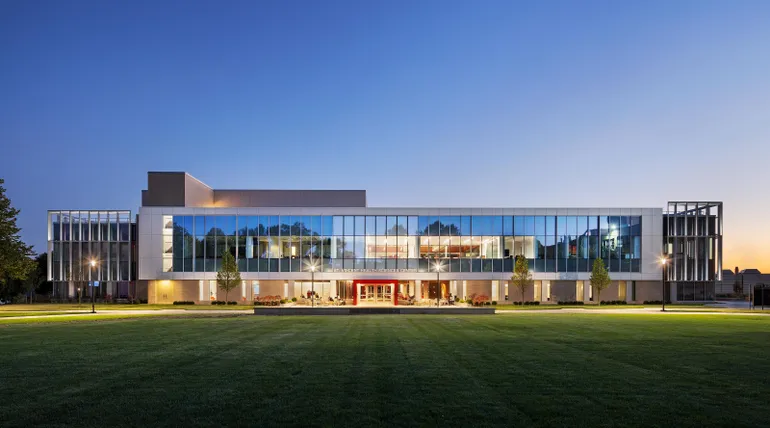More than two years after setting its sights on large projects in New York City, Boston-based Shawmut is ready to expand in the region.
The contractor recently appointed several leaders to new roles in the area, including:
- Kasia Mickowska, a 23-year industry veteran, was named project executive.
- Thomas Howard, who has 40 years of experience in the new construction and renovation markets, was named senior MEP manager.
- Brian Troast, a specialist in high-rise construction was promoted to senior director of construction operations.
The moves follow Shawmut’s aggressive strategy from 2022 to grow its market share in large-scale projects in the Big Apple. At that time, the Boston contractor hired Charlie Avolio, former president and general manager of Suffolk’s New York division, as head of major projects for its New York metro region.
Here, Avolio talks with Construction Dive about the firm’s strategy, recent milestones and market trends driving its growth.
This interview has been edited for brevity and clarity.
CONSTRUCTION DIVE: How does the expansion of the large project division align with Shawmut’s broader growth strategy in New York City?
CHARLIE AVOLIO: The large project division is a key element of Shawmut’s strategy to grow market share in large-scale projects. In New York specifically, we’re focused on growing our portfolio in the education, commercial, healthcare and life sciences sectors while increasing the size of our projects in established sectors including hospitality, sports venues, cultural and retail.
We’ve found an effective mix of hiring and developing from within to grow our large project division talent bench — including the recent promotion of Brian Troast and hiring Kasia Mickowska and Tom Howard. Another key component of the division is our preconstruction team — we’ve expanded this team significantly since 2022 and invested in technology such as 3D reality capture.
Shawmut previously highlighted healthcare and life sciences as target sectors for growth. Have there been any significant shifts in these or other sectors since then?
We’ve made inroads in growing our portfolio of both healthcare and life sciences, including Taconic Partners’ life sciences hub at the Hudson Research Center, projects at Columbia University Irving Medical Center and New York-Presbyterian, and our most recent completion of the $106 million St. John’s University St. Vincent Health Sciences Center.
Charlie Avolio
Permission granted by Shawmut
In the healthcare sector, we’re seeing a big push in high-end, luxury preventative healthcare and wellness centers, which provide offerings ranging from MRIs to cold plunges. Our experience in healthcare, hospitality and retail construction positions Shawmut well for the increasing demand for these spaces.
How do projects like the one at St. John’s University and your recent renovations for New York Public Library reflect your growth in large-scale work?
The St. Vincent Health Sciences Center at St. John’s University is a $106 million, 70,000-square-foot ground-up academic building with advanced classrooms, laboratories and patient simulation spaces to train future healthcare professionals.
The facility is all-electric and energy-efficient, heated and cooled by a geothermal field with 66 wells drilled nearly 500 feet deep — only the second of its kind in New York City. In preconstruction, we leveraged 3D logistics plans to enhance planning and project efficiency, and the team’s technical skills resulted in achieving the completion goal we established with the university at the start of the project.
Our work at New York Public Library’s Aguilar branch reflects the expertise we’ve established in historic preservation — coupled with skilled infrastructure work — as the team continues to renovate the 120-year-old landmarked building.
How has building out your preconstruction team impacted project delivery in the New York City market?
Projects succeed when stakeholders are aligned and working toward the same goal from the outset. Preconstruction drives shared responsibility and accountability, which leads to collaboration and solution-finding at a point when teams can affect change.
Our director of preconstruction, Jason Karp, is an early adopter of technology, and this helps us to continue refining our preconstruction process to drive cost and schedule alignment with client goals. Thanks to our thorough preconstruction with St. John’s University, we delivered the $106 million, ground-up St. Vincent Health Sciences Center on time and on budget.
Any other construction trends you think are important to mention?
We’re anticipating the pent-up demand for refreshed hotel rooms in New York — as well as new builds in Miami and Los Angeles — to swell in 2025 and into 2026.
We’re well-positioned to meet this demand, recently acquiring First Finish, a premier full-service hotel renovation contractor. The partnership combines the specialties of each firm — large, complex hotel projects and fast-track, luxury interiors — to provide an all-in-one solution for clients with our expertise and extensive, highly skilled trade partner and supplier network. While most full-scale hotel projects require two contractors or more, we provide one team — a unique offering in the market.

